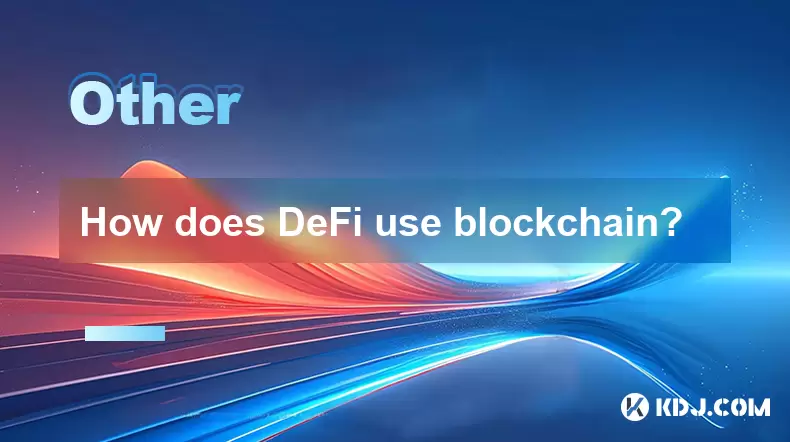-
 Bitcoin
Bitcoin $113700
0.66% -
 Ethereum
Ethereum $3471
-0.04% -
 XRP
XRP $2.885
-0.16% -
 Tether USDt
Tether USDt $1.000
0.05% -
 BNB
BNB $747.8
-0.10% -
 Solana
Solana $161.1
-0.98% -
 USDC
USDC $1.000
0.02% -
 TRON
TRON $0.3255
-0.22% -
 Dogecoin
Dogecoin $0.1980
1.46% -
 Cardano
Cardano $0.7237
2.87% -
 Hyperliquid
Hyperliquid $37.79
0.87% -
 Stellar
Stellar $0.3941
5.48% -
 Sui
Sui $3.422
1.35% -
 Chainlink
Chainlink $16.14
1.97% -
 Bitcoin Cash
Bitcoin Cash $540.7
1.55% -
 Hedera
Hedera $0.2432
4.26% -
 Ethena USDe
Ethena USDe $1.001
0.04% -
 Avalanche
Avalanche $21.31
-0.06% -
 Toncoin
Toncoin $3.624
1.19% -
 Litecoin
Litecoin $109.0
0.76% -
 UNUS SED LEO
UNUS SED LEO $8.967
0.09% -
 Shiba Inu
Shiba Inu $0.00001217
1.84% -
 Polkadot
Polkadot $3.584
1.85% -
 Uniswap
Uniswap $9.123
2.03% -
 Monero
Monero $294.7
0.87% -
 Dai
Dai $0.0000
0.01% -
 Bitget Token
Bitget Token $4.322
0.60% -
 Pepe
Pepe $0.00001048
2.65% -
 Cronos
Cronos $0.1329
2.05% -
 Aave
Aave $257.0
1.88%
What is EigenLayer for blockchain?
EigenLayer enhances blockchain security and efficiency by allowing validators to restake assets across multiple networks, increasing returns and reducing risk.
Apr 13, 2025 at 01:42 am

EigenLayer is a significant innovation in the blockchain ecosystem, designed to enhance the security and efficiency of decentralized networks. EigenLayer introduces a novel approach to restaking, which allows validators to reuse their staked assets across multiple blockchain networks. This not only improves the security of these networks but also increases the potential returns for validators. By understanding how EigenLayer functions and its benefits, participants in the cryptocurrency space can better appreciate its impact on the broader blockchain landscape.
What is Restaking in EigenLayer?
Restaking is a core concept in EigenLayer, and it refers to the process where validators can stake their assets not just on one blockchain, but on multiple networks simultaneously. This mechanism increases the capital efficiency for validators, as they can use the same assets to secure different blockchains. In traditional staking, validators lock their tokens in a single network to participate in consensus and earn rewards. With EigenLayer, these validators can extend their staked assets to other networks, thereby increasing their potential returns without needing additional capital.
How Does EigenLayer Work?
EigenLayer operates by allowing validators to register their staked assets on the EigenLayer platform. Once registered, these assets can be allocated to various Actively Validated Services (AVSs), which are essentially other blockchain networks or decentralized applications that require additional security. Validators can choose which AVSs to support, and in return, they receive additional rewards from these networks. The EigenLayer protocol ensures that the staked assets remain secure and that validators are incentivized to act honestly across all networks they support.
Benefits of EigenLayer for Validators
Validators stand to gain significantly from using EigenLayer. Firstly, they can increase their staking yield by participating in multiple networks. This means that instead of earning rewards from just one blockchain, they can earn from several, thus maximizing their returns on the same staked assets. Secondly, EigenLayer allows validators to diversify their risk. By spreading their staked assets across different networks, validators can mitigate the impact of any single network's performance on their overall returns. Lastly, EigenLayer enhances the security of the networks it supports, as it brings more validators and more staked assets into the fold, thereby increasing the overall security and decentralization of these networks.
Benefits of EigenLayer for Blockchain Networks
For blockchain networks, EigenLayer provides a way to enhance their security without requiring their own dedicated set of validators. By tapping into the existing pool of validators on EigenLayer, these networks can quickly and efficiently boost their security. This is particularly beneficial for new or smaller networks that may struggle to attract enough validators on their own. Additionally, EigenLayer can help these networks to grow their validator base, as the potential for higher returns may attract more participants to the ecosystem.
Potential Risks and Considerations
While EigenLayer offers numerous benefits, there are also potential risks that participants should be aware of. One key risk is the increased complexity of managing multiple staked assets across different networks. Validators must ensure that they are adequately monitoring and maintaining their staked assets on all supported networks to avoid penalties or slashing. Another consideration is the potential for correlated risks, where issues in one network could impact the others if the same validators are supporting multiple networks. It is important for participants to carefully assess these risks and ensure they have the necessary knowledge and resources to manage their participation in EigenLayer effectively.
How to Participate in EigenLayer
Participating in EigenLayer involves several steps that validators must follow to register their staked assets and allocate them to AVSs. Here is a detailed guide on how to get started:
- Register on EigenLayer: The first step is to register on the EigenLayer platform. This typically involves creating an account and connecting your cryptocurrency wallet to the platform.
- Stake Your Assets: Once registered, you need to stake your assets on the EigenLayer platform. This can be done by transferring your tokens to the designated staking contract on the platform.
- Choose Actively Validated Services (AVSs): After staking your assets, you can choose which AVSs you want to support. This involves selecting the networks or applications that you wish to allocate your staked assets to.
- Monitor and Manage Your Staked Assets: It is crucial to continuously monitor your staked assets and the performance of the AVSs you are supporting. This includes checking for any updates or changes in the networks and ensuring that you are complying with all necessary requirements to avoid penalties.
- Withdraw or Reallocate Your Assets: If you decide to stop supporting a particular AVS or wish to withdraw your staked assets, you can do so through the EigenLayer platform. This may involve a waiting period or other conditions, so it is important to review the specific terms and conditions for each AVS.
Frequently Asked Questions
Q: Can anyone participate in EigenLayer, or are there specific requirements?
A: While EigenLayer is designed to be accessible, there may be certain requirements for participants, such as a minimum amount of staked assets or specific technical knowledge. It is important to review the platform's documentation and guidelines to understand any eligibility criteria.
Q: How does EigenLayer ensure the security of staked assets across multiple networks?
A: EigenLayer uses a combination of smart contracts and validation mechanisms to ensure the security of staked assets. The platform continuously monitors the performance and compliance of validators across all supported networks, and it has mechanisms in place to penalize or slash validators who act maliciously or fail to meet their obligations.
Q: What happens if a validator fails to meet the requirements of an AVS they are supporting?
A: If a validator fails to meet the requirements of an AVS, they may face penalties or slashing of their staked assets. The specific consequences depend on the rules and conditions set by each AVS, so validators should carefully review these before allocating their assets.
Q: Can EigenLayer be used with any blockchain network, or are there specific compatibility requirements?
A: EigenLayer is designed to be compatible with a wide range of blockchain networks, but there may be specific technical requirements or integrations needed for each network. It is important for network operators to work with the EigenLayer team to ensure compatibility and to set up the necessary infrastructure to support EigenLayer validators.
Disclaimer:info@kdj.com
The information provided is not trading advice. kdj.com does not assume any responsibility for any investments made based on the information provided in this article. Cryptocurrencies are highly volatile and it is highly recommended that you invest with caution after thorough research!
If you believe that the content used on this website infringes your copyright, please contact us immediately (info@kdj.com) and we will delete it promptly.
- Navigating the Meme Coin Mania: Cold Wallets, SHIB, and DOGE in 2025
- 2025-08-03 22:30:16
- Bitcoin's Price Fall and Scrutiny: What's a New Yorker to Think?
- 2025-08-03 22:30:16
- Shiba Inu's Resistance and Recovery Push: What's Next for SHIB?
- 2025-08-03 22:50:16
- Bitcoin, Hashcash, and Crypto Innovation: A Look at the Foundation and Future
- 2025-08-03 23:12:53
- Meme Coin Mania: Bonk, Pudgy Penguins, and the Quest for the Next Crypto Sensation
- 2025-08-03 22:50:16
- Binance Coin's Bull Run: Chain Upgrades, Token Burns, and the Road to $1000
- 2025-08-03 23:15:31
Related knowledge

What is the difference between on-chain and off-chain transactions?
Aug 02,2025 at 04:22pm
Understanding On-Chain TransactionsOn-chain transactions refer to digital asset transfers that are recorded directly on a blockchain ledger. These tra...

What is a node's role in a blockchain network?
Aug 03,2025 at 03:16pm
Understanding the Function of a Node in a Blockchain NetworkA node is a fundamental component of any blockchain network, acting as a participant that ...

What is the double-spending problem and how does blockchain prevent it?
Aug 02,2025 at 01:07pm
Understanding the Double-Spending ProblemThe double-spending problem is a fundamental challenge in digital currency systems where the same digital tok...

What is the difference between a blockchain and a database?
Aug 01,2025 at 09:36pm
Understanding the Core Structure of a BlockchainA blockchain is a decentralized digital ledger that records data in a series of immutable blocks linke...

How does DeFi use blockchain?
Aug 03,2025 at 11:15pm
Understanding the Role of Blockchain in DeFiDecentralized Finance (DeFi) relies fundamentally on blockchain technology to operate without intermediari...

How does blockchain handle scalability?
Aug 02,2025 at 02:58pm
Understanding Blockchain Scalability ChallengesBlockchain scalability refers to a network's ability to handle an increasing volume of transactions wit...

What is the difference between on-chain and off-chain transactions?
Aug 02,2025 at 04:22pm
Understanding On-Chain TransactionsOn-chain transactions refer to digital asset transfers that are recorded directly on a blockchain ledger. These tra...

What is a node's role in a blockchain network?
Aug 03,2025 at 03:16pm
Understanding the Function of a Node in a Blockchain NetworkA node is a fundamental component of any blockchain network, acting as a participant that ...

What is the double-spending problem and how does blockchain prevent it?
Aug 02,2025 at 01:07pm
Understanding the Double-Spending ProblemThe double-spending problem is a fundamental challenge in digital currency systems where the same digital tok...

What is the difference between a blockchain and a database?
Aug 01,2025 at 09:36pm
Understanding the Core Structure of a BlockchainA blockchain is a decentralized digital ledger that records data in a series of immutable blocks linke...

How does DeFi use blockchain?
Aug 03,2025 at 11:15pm
Understanding the Role of Blockchain in DeFiDecentralized Finance (DeFi) relies fundamentally on blockchain technology to operate without intermediari...

How does blockchain handle scalability?
Aug 02,2025 at 02:58pm
Understanding Blockchain Scalability ChallengesBlockchain scalability refers to a network's ability to handle an increasing volume of transactions wit...
See all articles

























































































